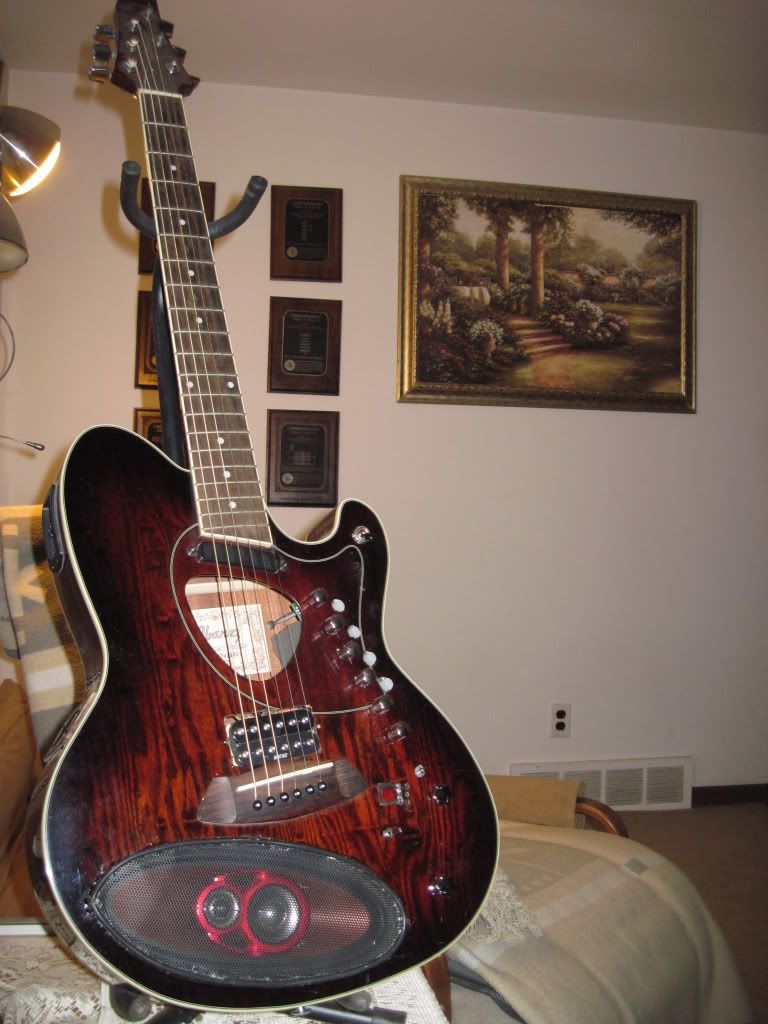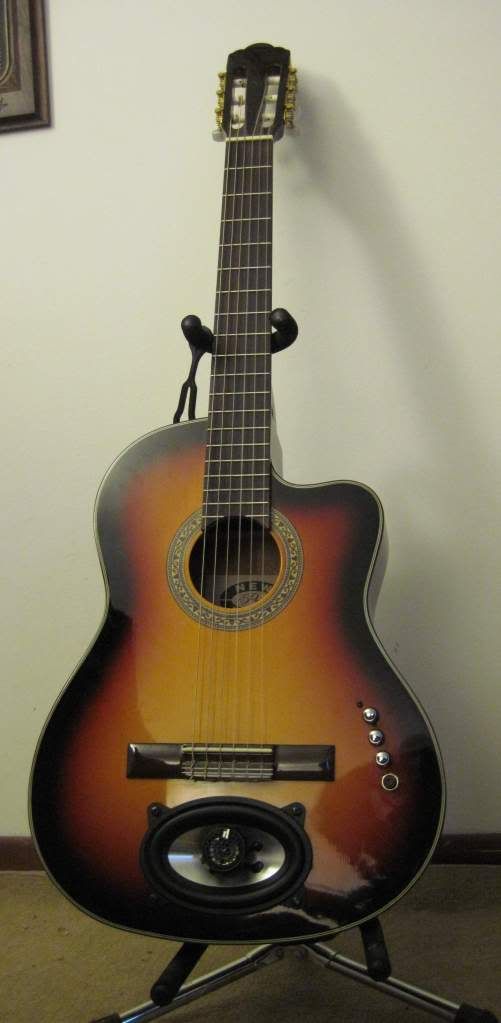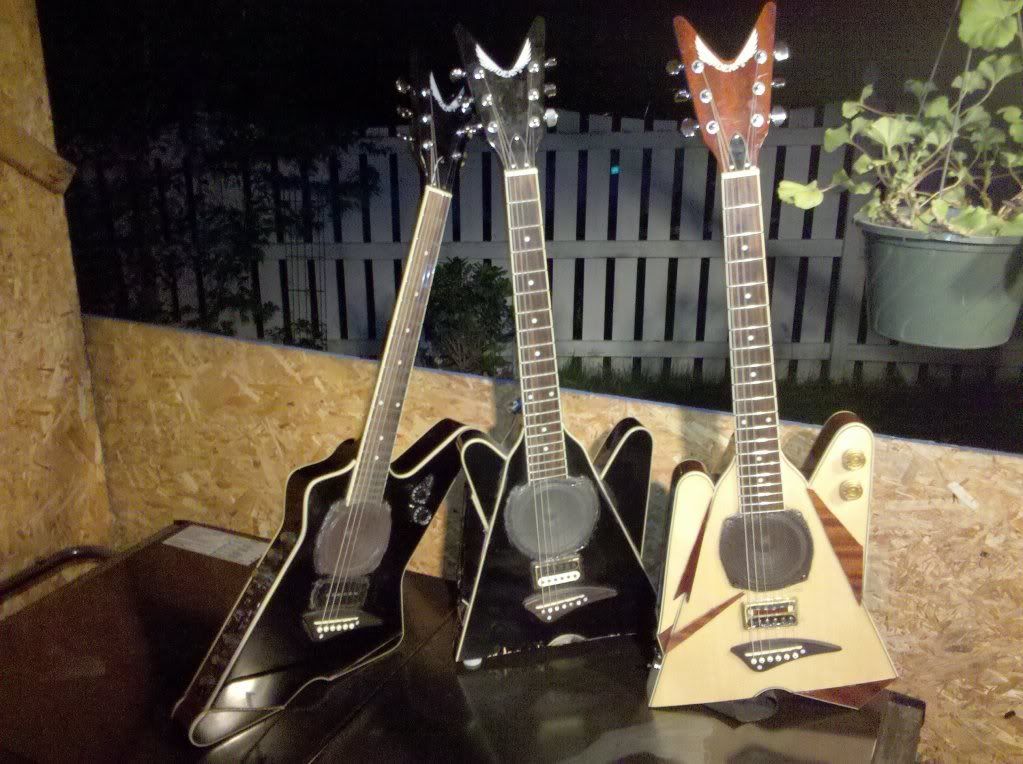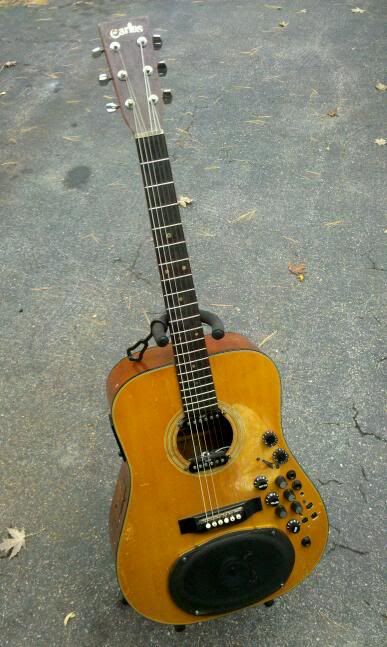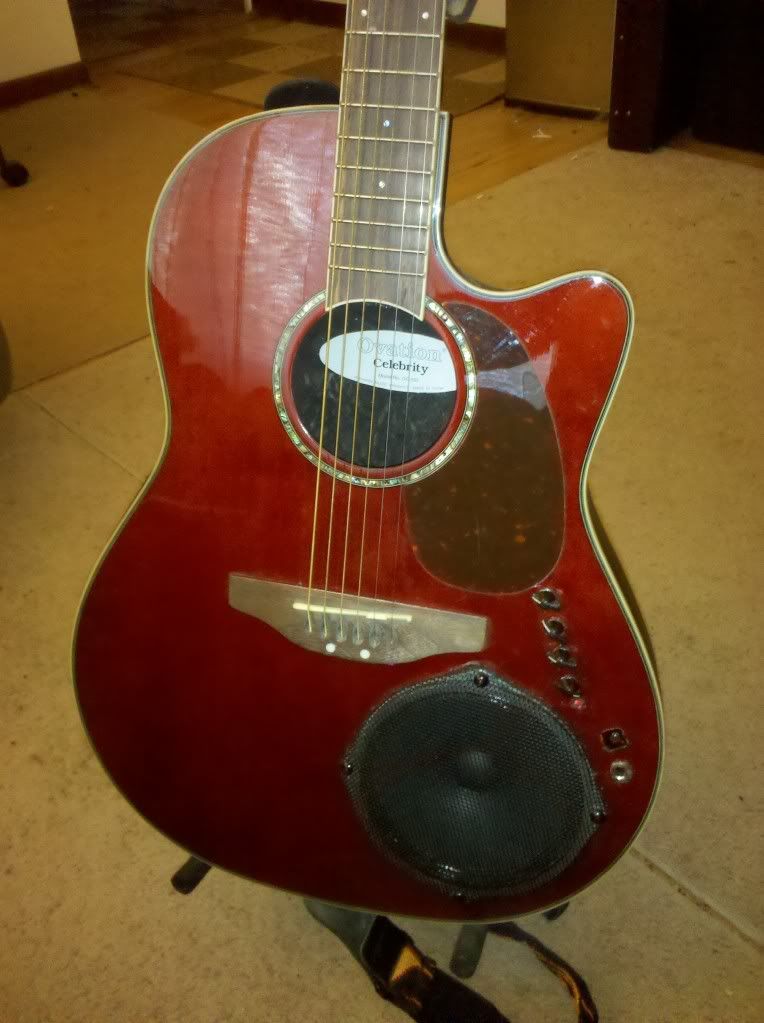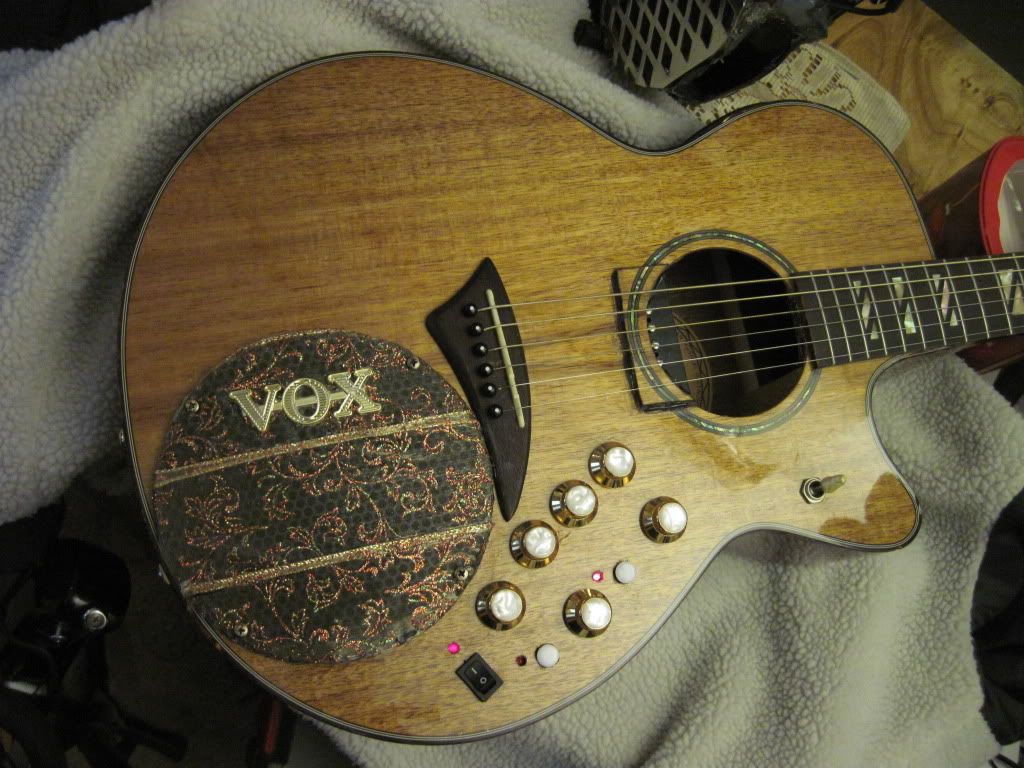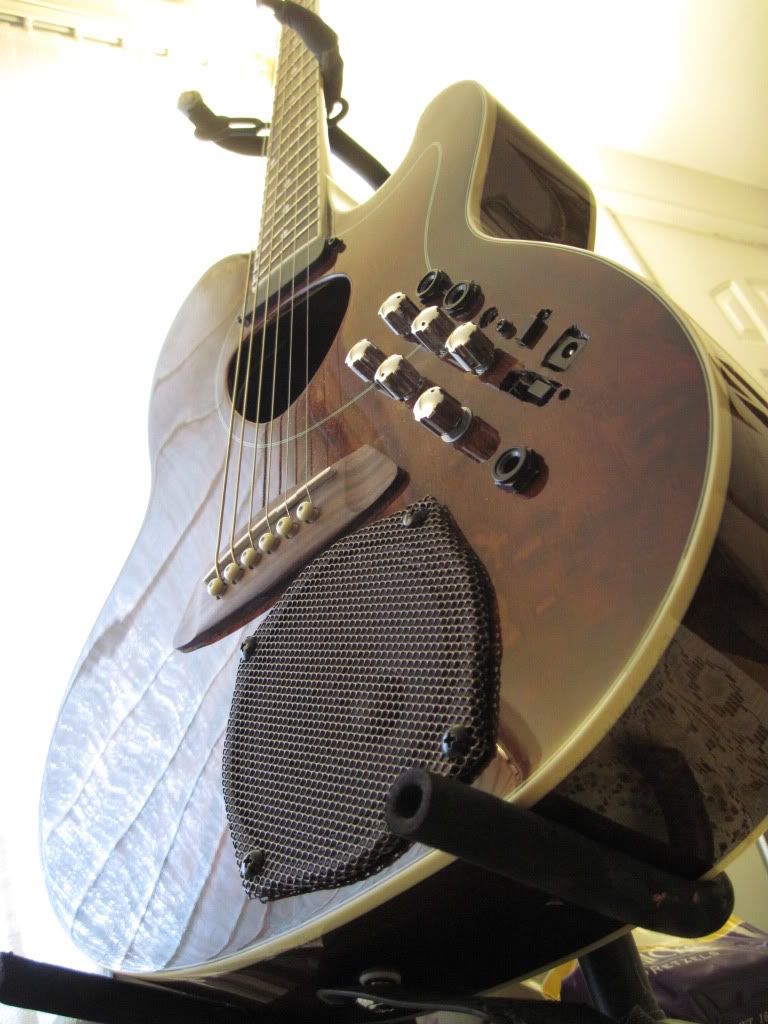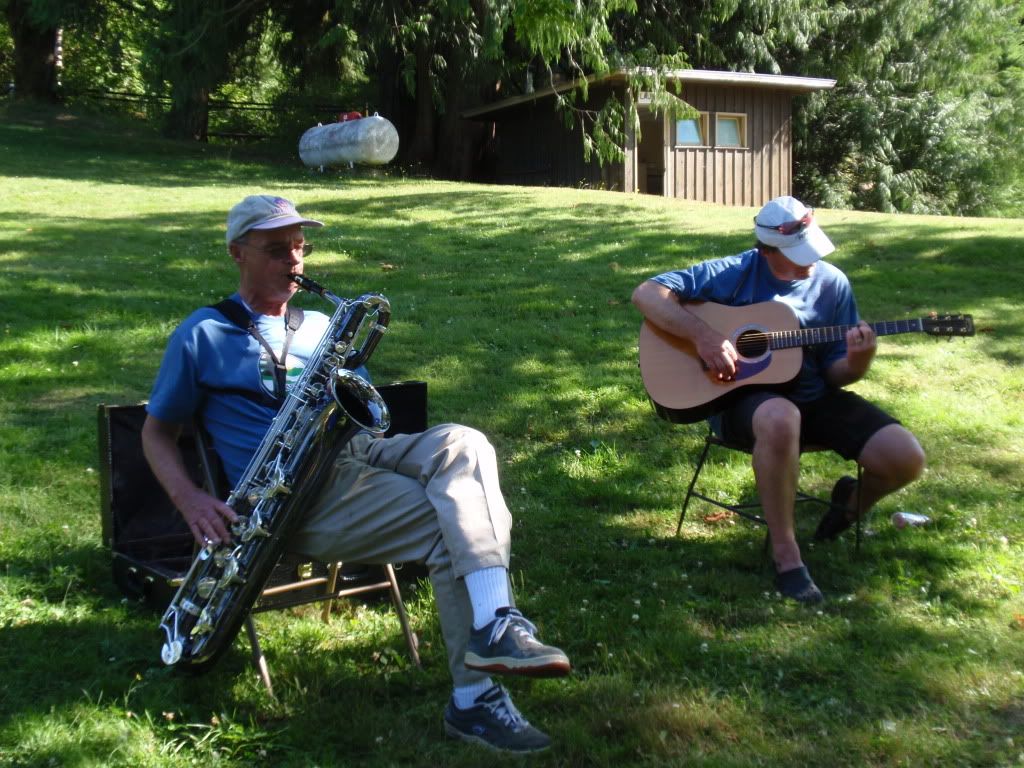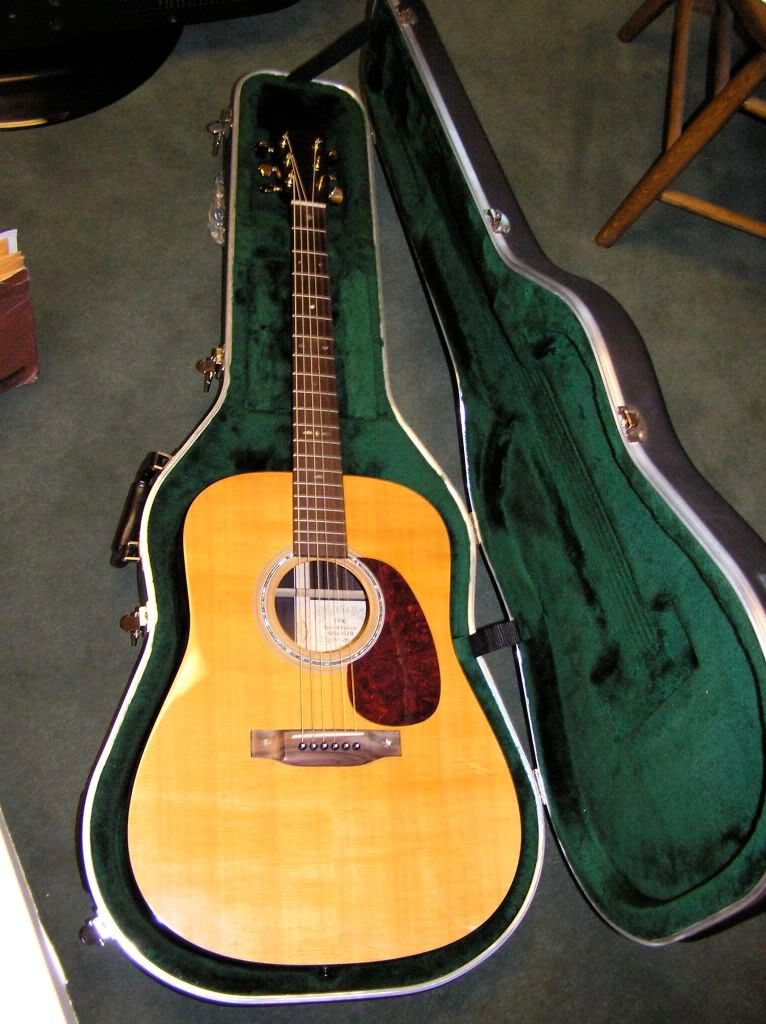also doubles as a Transformer
It looks more like a decepticon to me.
Sent from my iPhone using Tapatalk
Yeah, I noteced that years ago, when I first saw a tricone resonator!

Hi Ellen, is that steel? Or a lot of cuts in the wood? I have the impression steel but IDK - don't see a big pan. What's its "tonishness" - like I might even know what that is?
EDIT: I googled it. Nice guitar!
The neck is wood, and joins the body at the 12th fret. The body is nickel plated bell brass. All resonators are basically mechanically driven speakers (made out of thin wall, spun aluminum) in the guitar body. They were developed by John Dopyera who is the founder of the National company, in the early 20s. Tricones (which mine is), are the first type develped, and have 3, inverted cones, with a T-brace connected to the apex of each cone. The t-brace is also connected to the bridge, and serves to transfer string vibration from the bridge, to the cones. They have this raspy ringing kind of tone to them. It sounds kind of haunting. A few of these have wood bodies, but most are either brass bodied like mine, or have painted sheet steel bodies.
The other two types of resonator guitars are of the single cone variety, and basically differ in how they drive the cone. John Dopyera wanted to market single cone resonators when he was still running National. The board of directors wouldn't let him, and voted him out of the company. So he started a new company with his brothers called the Dobro Company (Dobro is shorthand for Dopyera Brothers), in the late 1920s. Unlike the Nationals, the Drobros were, and are a bit different. A typical Dobro-style guitar has a wooden body. While the resonator cone (and its assembly) are still made out of aluminum, it's mounted the opposite way of a National-syle resonator - with the cone facing outward from the guitar body (instead of downward) - like a speaker in a stereo enclosure. Now, this creates some problems with how to drive the cone, since the apex of the cone is away from the bridge. John got around that problem in a unique manner - by driving the rim of the cone instead! This was done by creating what is called a spider bridge. In a nutshell this is a spider web-type assembly, with the ends of the web, contacting the rim of the cone. The bridge sits on a platform in the center of the web, transferring string vibrations via the web, to the rim of the cone. Spider bridge resonators, have this sort of honky, midrangey tone, and as a result, are not only liked by acoustic blues players, but also bluegrass players (especially lap steel bluegrass players like Jerry Douglas).
Now, as I said, there are two types of single cone resonator guitars. The other type is basically a resonator guitar in its simplest form, and was developed by National around the same time as the Dobros, to sort of steal John Dopyera's thunder. These single cones (often called Duolians, or Triolians in their earliest forms), use an inverted, large, single cone. The bridge is put on a biscuit shaped mounting assembly (hence, giving guitars of this type, the classification of biscuit bridged resonators), which is mounted directly to the apex of the cone. They have a very brash, popping, percussive sound that is very popular with blues players (especially those of the gutbucket slide variety). Body materials for single cone , biscuit bridge resos vary. Some (such as the majority of those made by National) have plated brass or painted steel bodies, but quite a few have wooden bodies.
Tri-Cone Assembly
Spider Bridge Assembly
Biscuit Bridge Assembly
Here's a website that goes into some further explanation of resonator guitars:
http://www.acousticfingerstyle.com/ResonatorsExplained.htm
Here's some clips of each type
Tricone:
Dobro/Spider Bridge
Biscuit Bridge








